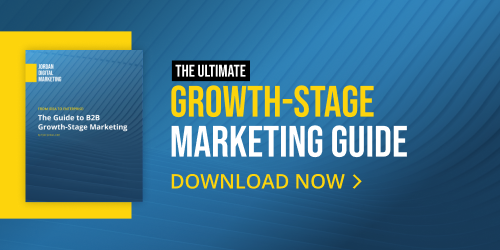Growing AI Search Visibility Phase 2: The Marketer Playbook for Authority Building
Google has made plenty of headlines lately for revelations that give advertisers reason to be skeptical of its business practices.
Between recently resigned ad exec Jerry Dischler’s testimony in Google’s antitrust lawsuit that Google is gaming auction pricing and a pair of 2023 reports from Adalytics showing YouTube and Google Search Partner (GSP) placements on fraudulent and/or highly problematic sites, Google’s trust factor with advertisers is as low as it’s been in a long time.
And Google seems to know it – at least, that’s what it looks like given the platform’s recent announcement that they will allow advertisers to opt out of Search Partners entirely. According to Search Engine Land, the opt-out will be temporary (though it’s not known how long it will be in effect), and advertisers have until March 1, 2024, to pull the plug on Search Partner campaigns.
The Changes of Opting Out
This certainly doesn’t solve all of Google’s trust issues, but it’s good news for advertisers. Previously, advertisers could opt out of the GSP for Search and Shopping campaigns, but now Google has expanded this option to allow advertisers to opt out of the SPN in Performance Max and Universal App campaigns. The latter two campaigns are more reliant on AI and automation; pulling Search Partner ads gives advertisers slightly more control over their Performance Max and App campaigns and where their ads can be shown.
The GSP isn’t all bad; it can occasionally be useful in generating awareness and reaching users who are not frequently using Google’s search engine. However, most of the time we have seen that Search Partners (and the Display Expansion) tend to spend lots of our clients’ budgets with far poorer returns than the Google network. This alone would have made the option to pull out of campaigns an important one, even without the controversy reported by Adalytics. If an advertiser still wishes to use the GSP, we recommend monitoring performance closely multiple times a week for a few weeks after launch to get an idea of performance, then deciding whether it’s worth leaving active.
What the Future Holds for the GSP
Some unsolicited advice to Google for being a better partner where the GSP is concerned: 1) be transparent about which sites ads are eligible to appear for; 2) give more control back to advertisers with more filtering options for the GSP. For example, if there are major partners within the GSP for whom we can easily select “yes” or “no” for ad placements, that would give us more trust with Google and better peace of mind knowing more about where ads are appearing.
I’m not holding my breath; Google claims their machine algorithm knows how to optimize our ads for the GSP, including where to run those ads. I’ll admit that Google’s machine algorithm is getting better, but our experience at JDM calls that claim into question. If Google wants to take a longer-term approach to optimizing ad revenue, it could go a long way toward regaining allies by admitting that many experienced advertisers know better than Google what’s best for their brands – and giving us a way to exercise that judgment in our campaigns.
We’ll be providing our POV on Google updates as they roll out in 2024 and beyond, so subscribe to the JDM blog to stay informed!
Tags:

Dec 19, 2023 5:35:24 AM



-Dec-04-2025-09-58-32-5416-PM.png?width=500&height=500&name=Regular%20Blog%20Hero%20(1)-Dec-04-2025-09-58-32-5416-PM.png)

